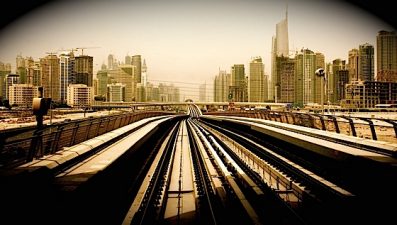A report last week showed that development projects like The World manmade islands above are destroying the Gulf’s fragile marine ecosystem. One major culprit, Nakheel, aims to restore their own damage with 500 artificial reefs.
Last week the United Nations University Institute for Water, Environment and Health in Toronto released the first official report linking rapid development projects with widespread destruction to the Gulf’s marine environment. Environmentalists and activists have long suspected that man-made islands and row after row of the world’s biggest this and that could not possibly be sustainable but the report taken up by such prestigious journals as Nature finally made that truth unequivocal.
Much of the damage done to this fragile ecosystem can be attributed to real estate developers Nakheel, which is behind such projects as The World manmade islands, Palm Jumeirah, and Palm Jebel Ali. Although they told The National it has nothing to do with the damning report released last week, the company recently announced that they will build 500 artificial reefs in an effort to restore the ecosystem in and around their own projects.
Bring back the fish
The National reports that Nakheel is working with Emirates Marine Environmental Group to develop a vast system of artificial reefs that is expected to attract fish back to the site within the next 6 months. Whereas previously divers and fishermen were not permitted to visit the areas surrounding Nakheel’s numerous coastal developments, they are now promising to open up 10% of the area to the public.
Nakheel’s chairman Ali Rashid Lootah told The National:
We thought it is important to help increase the marine life,” adding “It’s a normal practice that international businesses do some social work and we thought that because most of our development is on the marine side, we thought [such work] should be that side.”
Artificial reefs are manmade structures that are usually placed in fairly shallow waters. Concrete, metal, plastic and other materials are anchored permanently to not only attract fish and boost fishing or diving during a particular season, but also to act as a deterrent to destructive fishing practices such as bottom trawlers.
Unhappy investors
It is unclear how much Nakheel will spend to realize this ambitious program, though investors waiting for their own projects to be completed are reportedly not thrilled with this newly announced expenditure.
The World Wildlife Fund has listed the Gulf’s ecosystem as critically endangered as a result of overfishing and warmer, more acidic waters that are melting coral reefs around the world. It is believed that restoring these ecosystems that provide crucial habitat to a variety of marine life, can help to mitigate much manmade damage.
The Food and Agriculture Organization of the United Nations (FAO) cautions, however, that artificial reefs are not a panacea. On their website they note that “In terms of habitat rehabilitation, artificial reefs have little, if any, success as they only concern a limited area.”
:: The National




